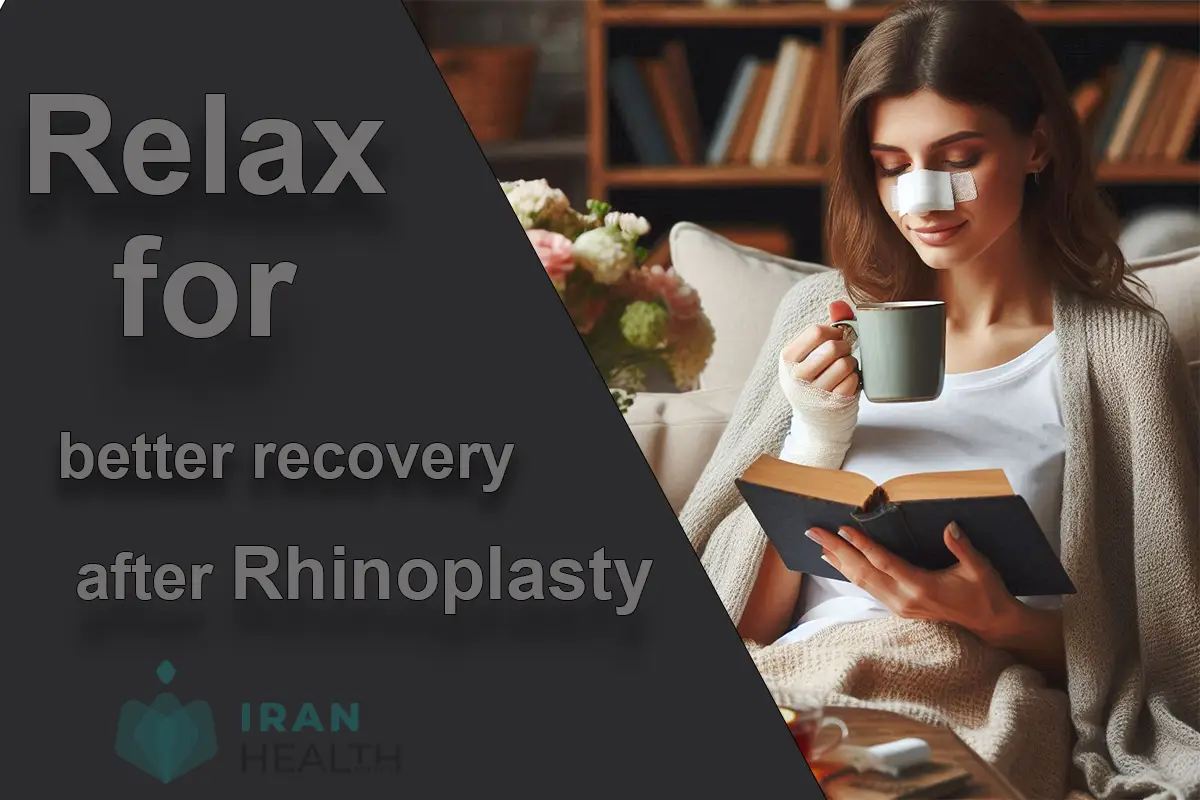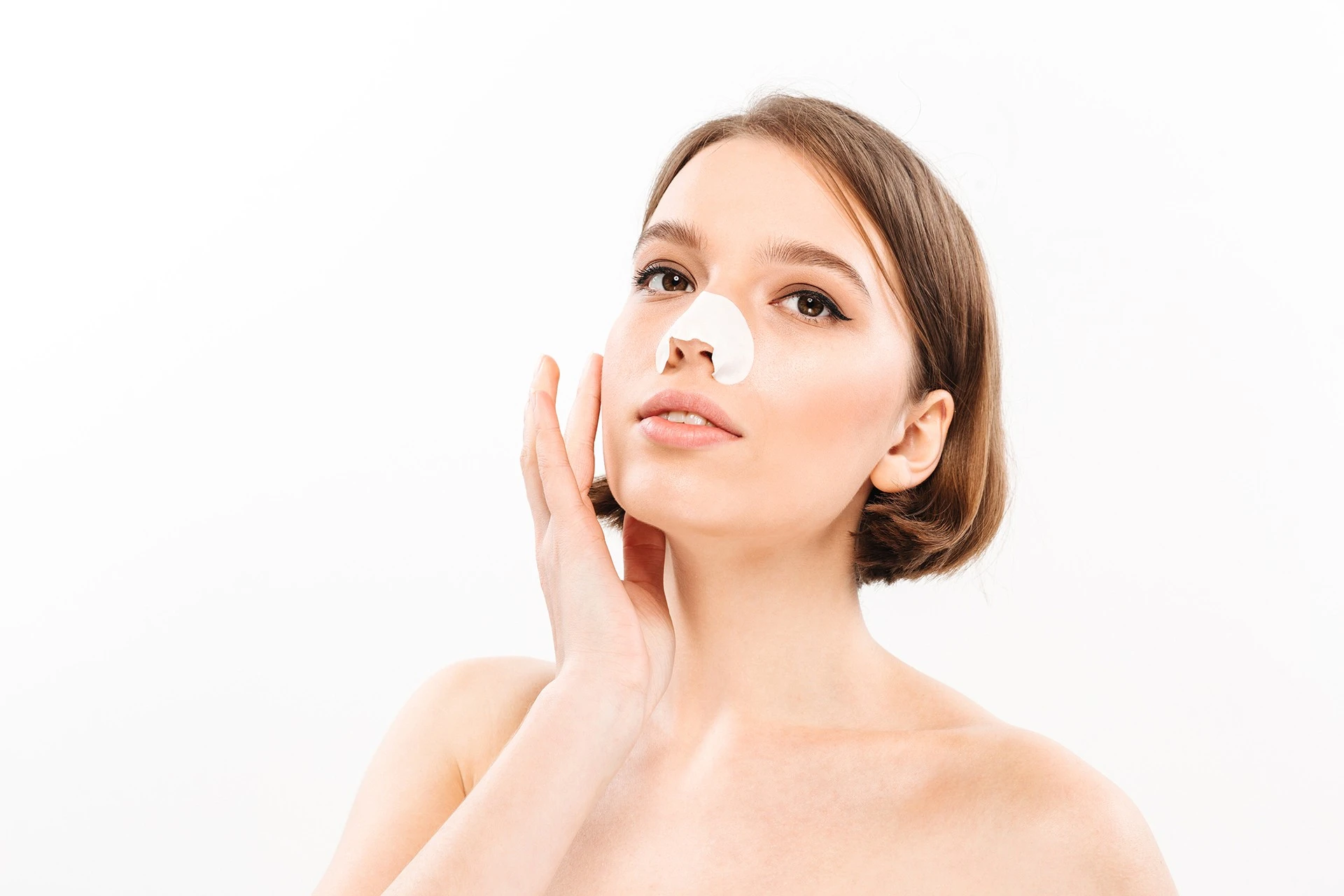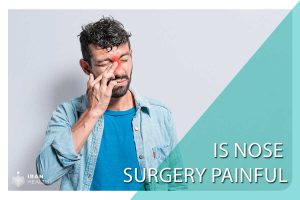Rhinoplasty Aftercare Day by Day (Roadmap)
| Day | Task | Tips & Reminders | Recovery Progress |
| 1-3 | Rest & Elevate | Avoid bending, straining, and heavy lifting | Swelling and bruising peak |
| Apply Cold Compresses | 15-minute intervals, 3-4 times a day | Reduce swelling and ease discomfort | |
| Take Pain Meds | Follow the doctor’s instructions for dosage and frequency | Manage pain and discomfort | |
| 1-7 | Keep Nasal Cast Clean | Gently wash with soap and water 2-3 times a day | Prevent infection and promote healing |
| 1-10 | Monitor for Bleeding | Report any excessive bleeding or discharge to your doctor | Ensure a safe and smooth recovery |
| 7-10 | Follow-up with Doctor | Remove stitches, check for complications | First milestone: stitches out |
| 1-6 weeks | Avoid Strenuous Activities | No heavy exercise, bending, or lifting | Allow your body to heal and recover |
| 1-6 weeks | Sleep with Head Elevated | Use extra pillows to reduce swelling | Promote healing and reduce discomfort |
| 2-6 weeks | Avoid Blowing Your Nose | Gently wipe with a tissue instead | Prevent nasal trauma and promote healing |
| 2-6 weeks | Avoid Rubbing Your Nose | Be gentle when washing your face | Prevent irritation and promote healing |
| 6 weeks+ | Resume Normal Activities | Gradually return to normal activities, including exercise | You’re on the road to full recovery |
To find out more about the rhinoplasty recovery timeline, please read the following link: rhinoplasty recovery timeline: what to expect

How do I take care of my nose after rhinoplasty?
We’ll separate the instructions into critical sections to create the recovery timeline. In addition, we provided related people who asked doctors their questions during post-op consultations for each section.
Section 1:Immediate Post-Op Care (0-3 days)
Maintain a Healthy Diet
- Continue Eating Well: Eating foods high in nutrients is important for healing. This includes Fruits, vegetables, nuts, and seeds.
Avoid Blowing Your Nose
- Gentle Care: To avoid nasal stress and encourage healing, gently wipe your nose with a tissue rather than blowing it. Pucker the mucus back and spit it out if needed.
- Nasal Spray: Help control mucus accumulation and maintain the nose lubricated using a nasal spray.
Apply Cold Compresses
- To lessen swelling and discomfort, use cold compresses three to four times daily, for fifteen minutes each. In this way, swelling is reduced, and pain is eased.
Get Plenty of Rest
- Rest and Elevation: To help heal and lessen swelling, get enough sleep and keep your head elevated. Sleeping in a recliner or with your head on numerous pillows can quickly reduce surgical edema.
- Avoid Exhausting tasks: To save the healing tissues from any more stress, avoid heavy lifting and other physically demanding tasks.
Follow Medication Rules
- Pain Control: To control pain and discomfort, take your prescription as your doctor prescribes. Usually, advised painkillers are Tylenol (acetaminophen) or prescription drugs.
- Avoid Blood Thinners: Steer Clear of Blood Thinners The Use of aspirin and ibuprofen should only be done under medical supervision as they can thin your blood and result in excessive bleeding.
- Hydration: Drinking enough water will help you stay hydrated and reduce pain and swelling.
Following these recommendations can facilitate a more comfortable and seamless recovery in the first few days after rhinoplasty.
FAQ during this section:
- FAQ: Can I use ice directly on my nose?
Answer: No, it’s best not to put ice right up against your nose. Rather, use a small towel to lay a cold compress on either side of your nose on your cheeks and forehead. This helps lessen swelling without numbing or hurting the tissues in your nose.
- FAQ: How should I clear my nose if I can’t blow it?
Answer: Swipe a soft tissue gently over your nose. Should it be necessary, carefully pucker back and spit out your mucous. Use a saline nasal spray as your doctor prescribes to keep your nasal passages wet.
For learning more please read: Cleaning Your Nose After Rhinoplasty: A Complete Guide
- FAQ: When can I sleep on my side (sleeping position during nose job recovery?
Answer: For the first few days, avoid sleeping on your side. Sleeping on your back with your head raised is the best way to reduce swelling and pressure on your nose.
- FAQ: Can I take a shower after rhinoplasty?
Answer: After a rhinoplasty, you can take showers, but stay out of hot tubs and baths for at least a week. Take short, warm showers to avoid upsetting your bandaging.
Section 2: Early Recovery (weeks 1-2)
Following these tips can ensure a successful and quick recovery after rhinoplasty surgery. To encourage recovery and lower your chance of problems, never forget to drink enough water, keep your head up, and stay out of the sun.
Let’s analyze what we said in more detail!
Keep Your Head Elevated
- Why: Elevating your head helps reduce swelling and promotes healing by reducing blood flow to the nose and face.
- How: Elevate your head with 2-3 extra pillows while sleeping. You can also use a wedge pillow or a recliner.
- Tips: Avoid lying flat on your back or stomach, as this can increase swelling.
Avoid Excessive Sunlight
- Why: Direct sunlight can cause swelling, increase bruising, and delay healing.
- How: Limit your exposure to direct sunlight, especially during peak hours (10 am-4 pm).
- Tips: Wear protective clothing, such as a hat and sunglasses, when going outside.
Drink Plenty of Water
- Why: Staying hydrated is essential for healing, as it helps flush out toxins and promote tissue repair.
- How: Drink at least 8-10 glasses of water daily, and avoid caffeinated or sugary drinks that can dehydrate you.
- Tips: Drink water regularly throughout the day rather than consuming large amounts at one time.
Plan for Your Recovery
- Why: Planning can help reduce stress and ensure a smooth recovery.
- How: Prepare your home and schedule to accommodate your recovery needs.
- Tips: Stock up on comfortable, loose-fitting clothing and soft blankets.
Additional Tips for Early Recovery
- Take pain medication as directed: Follow your doctor’s instructions for pain medication to manage discomfort and pain.
- Monitor for bleeding: Report any excessive bleeding or discharge to your doctor immediately.
- To clean your nasal cast, gently wash it with soap and water and pat it dry with a clean towel.
Exercise
- Starting Slowly: Start with easy activities like walking to encourage blood flow and support recovery. Walking reduces stiffness and helps maintain cardiovascular fitness without unduly taxing the surgical site.
- Avoid Heavy Lifting and Hard Activities: To prevent straining the healing tissues, refrain from doing either.
Avoid Smoking and Alcohol
- Smoking: Refrain from smoking as it significantly increases the risk of postoperative complications, including impaired wound healing, infections, and cardiopulmonary issues. Smoking cessation is crucial for reducing these risks and promoting better surgical outcomes.
- Alcohol: Avoid consuming alcohol as it can lead to increased postoperative complications such as infections, bleeding episodes, and impaired wound healing. Abstaining from alcohol helps in maintaining optimal physiological conditions for recovery.
Do Not Swim for a Week
- Swimming: Don’t swim or put your nose underwater for at least a week after surgery to protect it and avoid getting an infection. Before swimming, ensure your wounds are completely healed and show no signs of infection.
- Hygiene: If you have to be near water, ensure it is clean and well-kept to lower your risk of getting sick. If necessary, cover the surgical site with waterproof bandages.
FAQ during this section:
- Can I wear makeup during early recovery?
-
- It’s generally best to avoid makeup for the first week or as your doctor directs. Makeup can irritate the healing tissues and increase the risk of infection.
Learn more: When Can I Wear Makeup Again After Rhinoplasty?
- What if my splint feels loose?
-
-
- Never try to reposition the splint on your own. If needed, Get it checked and refitted by your doctor immediately.
-
- Is it normal to have some nasal congestion?
-
-
- Some nasal congestion is normal after rhinoplasty due to swelling and packing materials. If you have concerns about the degree of congestion, consult your doctor.
-
- When can I return to work?
-
-
- The timing for returning to work depends on your job and the extent of your surgery. Most people can return to office work within a week, while physically demanding jobs may require more recovery. Discuss this with your doctor during your follow-up appointment.
-
- What are some signs of infection?
-
- Be aware of signs like increased redness, swelling, fever, or pus drainage from the surgical site. These could indicate an infection, and you should contact your doctor immediately.
Section 3: Late Recovery (14+ days)
Be Patient: How long does it take to recover from rhinoplasty?
- Recovery Timeline: Understand that recovery is a gradual process and can vary from person to person. Swelling and other symptoms may persist for several weeks or even months, depending on the type of surgery and individual healing rates.
- Progress Tracking: Focus on your progress rather than the time it takes. Keeping a recovery journal can help you see improvements over time and stay motivated.
- Taking Care of Anger Pain Management: To ease pain, follow your doctor’s instructions for the right amount of medicine. Talk to your doctor if you are worried or if you notice that your pain level has changed.
- Methods of Breathing: Practice light breathing to help your lungs expand and ease pain.
- Progress in Healing Nutrition: To help your body heal, focus on eating a healthy, balanced diet high in protein, vitamins, and minerals. Drinking a lot of water is essential to help your body heal and eliminate drugs.
Keeping an Eye on Progress
- Additional visits: Attend your doctor’s scheduled follow-up visits to discuss problems and monitor your progress.
- Write in a journal for recovery: Write down any changes in your pain, symptoms, or medication as you go. This can help you and your doctor keep track of your progress as you heal.
- Support Network for Emotional Health: At this time, friends, family, or support groups can help you feel better.
- Mental Health: Get professional help if you show any signs of worry, depression, or trauma after surgery.
Remember that everyone heals in their own way, so you should prioritize your physical and mental health during this time.
People Also Asked (FAQ):
- Can I wear glasses after rhinoplasty?
- You should consult your doctor if you are wondering whether you can wear glasses after Rhinoplasty surgery. Sometimes, you may need to wait a few weeks before wearing glasses due to potential pressure on the healing nose.
- Is it safe to blow my nose now?
- It’s generally safe to gently blow your nose after 2-4 weeks, but consult your doctor for specific instructions. Avoid forceful blowing that can disrupt healing.
- When can I resume strenuous exercise?
- Most strenuous activities can be resumed 4-6 weeks after surgery, once your doctor clears you. Listen to your body and avoid anything that causes pain or discomfort.
- Will I see the final results of my rhinoplasty yet?
- Significant swelling may still be present at this stage. The final results of your rhinoplasty can take up to a year to become fully evident.
- What should I do if I experience new or worsening pain?
- Contact your doctor immediately if you experience any new or worsening pain, swelling, redness, or drainage from the surgical site. These could be signs of infection.
Learn more: What to Do in Case of Nose Injury After Rhinoplasty?
When should I call my doctor?
Since we have repeatedly mentioned your follow-up appointment and calling your doctor, one may wonder when we need to call a doctor. Knowing the difference between average recovery and situations requiring a doctor’s attention is essential. Here are some times to contact your doctor after rhinoplasty:
- Excessive Bleeding: While minor spotting is acceptable, contact your doctor if the bleeding is bright red and seeping through tissues regularly.
- A fever over 100°F (37.8°C) may indicate an infection.
- Severe Pain: While painkillers should ease discomfort, contact your doctor if the pain is excruciating and not going down.
- Increased Swelling: While swelling is normal, see a doctor if it gets much worse or asymmetrical.
- Breathing Trouble: If blowing your nose or moving around does not help, you should see a doctor.
- Pus Drainage: Pus from the incision site or nostril indicates an infection and needs to be seen by a doctor.
- Get in touch with your doctor immediately if your stitches loosen or if the incision site splits open.
- eyesight Changes: Following surgery, you should let your doctor know if your eyesight changes.
Always try to be safe rather than sorry. Please do not hesitate to phone your doctor if you have any concerns. They are there to help you through your recuperation and to deal with any problems that could come.
Having said that, we recommend you to read about Do’s and Don’ts After Rhinoplasty Surgery: Essential Recovery Tips to complete your information for post-operative care after rhinoplasty
Who should I call if I have questions?
If you have any concerns about your recovery, contact your physician or the surgical facility where you had your rhinoplasty. Due to their expertise in your specific operation, they can give you the best advice. You should also receive some helpful aftercare advice from your individual aftercare manual to help you get through until you can see a doctor.
Contact IranHealthAgency to book a free consultation for rhinoplasty in Iran :
Contact information:
WhatsApp: 00989030549050
Need a more specific guide:
Healing and Recovery:
- 4 Months Post-Rhinoplasty: What to Expect
- How Soon Can I Laugh After Rhinoplasty?
- Reducing Swelling After Rhinoplasty: Effective Methods
- How Long Does Rhinoplasty Swelling Last?



